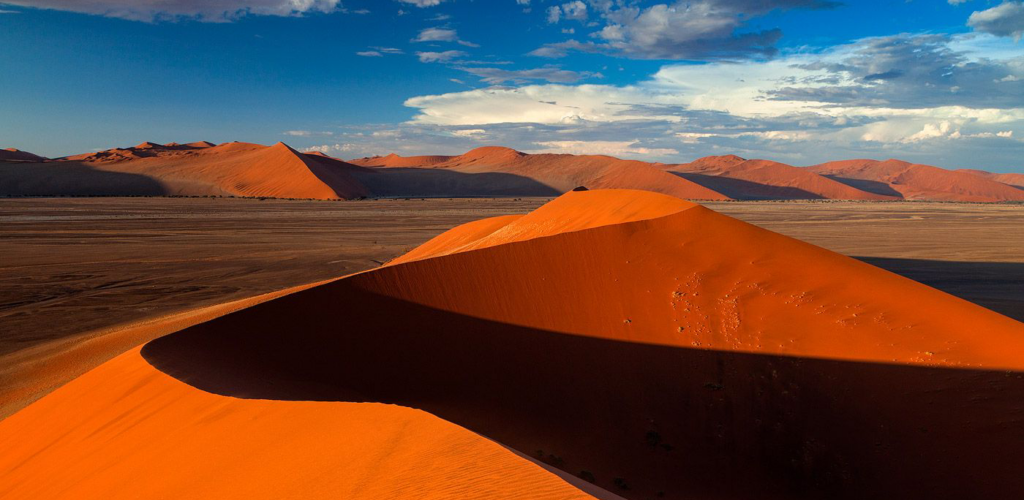The Namib Desert, also called Namibia’s “Red Sand Sea,” is one of Earth’s most stunning and ancient natural wonders. With its vast landscapes, unique ecosystem, and towering red sand dunes, it draws travelers seeking an extraordinary experience. This desert is not just a geographical marvel but a treasure trove of history, biodiversity, and conservation efforts.
The Ancient Story of the Namib Desert
The Namib Desert is known as the world’s oldest desert, with an existence spanning over millions of years. This longevity has created a unique ecosystem adapted to harsh conditions. The desert’s red sand, rich in iron oxide, becomes more vivid as it stretches inland from the Atlantic Ocean. These striking hues make it a photographer’s dream and a scientist’s fascination.
The Namib’s status as a UNESCO World Heritage Site highlights its global significance. It is recognized as the only desert with coastal dunes shaped by fog, an essential water source in its arid environment. This interplay of ocean and desert creates a one-of-a-kind ecosystem that is both fragile and fascinating.
The Unique Ecosystem and Life
Despite its arid nature, the Namib Desert supports an incredible range of flora and fauna. The iconic Welwitschia plant, a living fossil, survives for centuries by absorbing moisture from fog. Endemic beetles and other insects have also adapted by collecting water droplets on their bodies.
The desert is home to rare desert-adapted elephants, giraffes, and even lions. These animals thrive by navigating the sparse environment, relying on underground water sources and seasonal vegetation. These adaptations underscore the desert’s delicate balance and its species’ resilience.

Sossusvlei: The Iconic Heart of the Namib
Sossusvlei, located within Namib-Naukluft National Park, stands out as the desert’s most famous attraction. Surrounded by towering red dunes, it is a salt and clay pan that has become synonymous with the Namib. Climbing these dunes at sunrise offers breathtaking views, where shadows and light create mesmerizing patterns.
Visitors to Sossusvlei often explore the nearby Deadvlei, where ancient camelthorn trees stand starkly against white clay and red sands. This surreal landscape offers a vivid reminder of the desert’s timeless beauty.
Conservation Efforts in the Namib
Namibia takes pride in its conservation initiatives, which focus on preserving the Namib’s fragile ecosystem. The Namib-Naukluft National Park, one of Africa’s largest, plays a central role in these efforts. Eco-friendly tourism is encouraged to protect the environment and empower local communities.
Visitors can support these conservation efforts by adhering to sustainable practices. For example, guided tours minimize environmental impact and help educate tourists about the region’s ecological importance. By traveling responsibly, one contributes to preserving this natural treasure.
When to Visit and How to Prepare
The best time to visit the Namib Desert is during the cooler winter months, from midyear to early autumn. During this season, temperatures are mild, making exploration more comfortable. Wildlife is also more visible, adding another layer of excitement for nature enthusiasts.
Before visiting, it is crucial to plan well. The desert’s remote locations require careful preparation, including sufficient water, appropriate clothing, and reliable transportation. Joining guided tours ensures a safer and more enriching experience.
Conclusion
The Namib Desert is more than just a stretch of sand; it is a living testament to nature’s resilience and beauty. From its ancient dunes to its fog-fed ecosystems, it offers a unique blend of history, biodiversity, and adventure. Travelers who respect and cherish this fragile landscape can enjoy its wonders while ensuring its preservation for generations to come.
